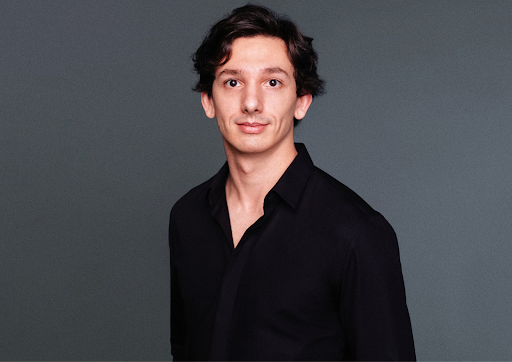Why Ange Gallego's Technical Edge Attracted Top-Tier VC Backing and Industry Acclaim

In a quiet apartment overlooking the Seine, Ange Gallego adjusted the brightness on his laptop and scanned a dashboard lighting up with activity. Somewhere in Manila, a graphic designer was minting her first generative art series. In Buenos Aires, a nonprofit organizer launched a community treasury to fund local clean water initiatives. Neither had written a single line of code.
Gallego watched as new wallets spun up, smart contracts deployed, and micro-apps went live—all built with tools he had engineered to make complex blockchain architecture feel invisible. For him, it wasn't about attention or attribution. It was about creating an infrastructure so intuitive, it receded into the background.
The Architecture of Access
Gallego's rise from Parisian software engineer to blockchain luminary hinges on a singular obsession: dismantling technical barriers. His latest platform, which allows users to spin up apps using simple AI prompts, slashed average deployment times from 14 hours to just 15 seconds. The tool's secret sauce—Continuous Prompt Composition™—chains natural language instructions into executable code, a feat comparable to translating poetry directly into machine language.
The impact is clear. Solana's user activity has seen a significant uptick, with a noticeable share of new decentralized applications emerging from micro-builders using Gallego's tools. These lightweight apps carry minimal transaction costs, making them especially accessible to creators in emerging markets where affordability is essential.
But Gallego's technical pedigree runs deeper. At Via Rollup Ltd., his Bitcoin layer-2 startup, he engineered a modular prover–verifier system that processes 4,500 transactions per second—642x Bitcoin's base layer—without relying on BitVM or third-party custodians. Celestia's developer docs now reference this framework, which solved a problem many had considered intractable: scaling Bitcoin while preserving its decentralized ethos.
The VC Seal of Approval
In March 2024, Colosseum Ventures—the ultra-selective accelerator behind many of Solana's standout projects—made a rare exception. Without a pitch deck or formal application, they awarded Gallego's platform a $250,000 pre-seed investment. Their decision was driven by clear signals of traction: several hackathon teams had independently cloned his SDK before he ever spoke to the firm. To the partners at Colosseum, it was compelling evidence that his tools were already shaping developer behavior.
The $100 million crypto fund delivered 23% annualized returns during the 2022–23 bear market by using delta-neutral strategies that minimized exposure to volatile assets. MIT's Crypto Finance course now teaches this playbook.
Scaling Without Sacrifice
Blockchain's trilemma—balancing scalability, security, and decentralization—has felled countless projects. Gallego's solutions sidestep tradeoffs through architectural ingenuity. Via's prover-verifier model splits computation between specialized nodes, enabling Bitcoin to achieve enterprise-grade throughput without compromising its battle-tested security. Meanwhile, an AI layer abstracts complexity while maintaining the 400-millisecond block times characteristic of high-performance blockchains.
"Most builders think 'scale up,'" Gallego explains. "We scale out—distributing load across networks so no single point fails." When Solana experienced congestion in early 2025, Gallego's traffic-routing protocol swiftly redirected activity to underutilized validators, helping maintain stability while other platforms struggled with outages.
The Critic's Dilemma
Not all observers applaud. "Democratization risks diluting skills," warns Dr. Elaine Zhou, a Stanford cryptographer. "If anyone can deploy a smart contract, who audits the code?"
Gallego's response is embodied in his automated audit system, which uses machine learning to detect common Solidity vulnerabilities before they reach production. "We're not replacing engineers," he notes. "We're letting them focus on hard problems instead of boilerplate."
The numbers suggest he is winning the argument. His user base now spans across dozens of countries, with a significant portion of builders coming from non-technical backgrounds. A Nairobi-based artist used the platform to launch an NFT gallery funding local schools; a Buenos Aires collective built a DeFi tool for peso inflation hedging.
The Invisible Future
Gallego's endgame mirrors TCP/IP's trajectory: infrastructure so ubiquitous it vanishes. Unlike the flashy NFT hype cycle of the 2020s, his vision focuses on making blockchain technology accessible and seamlessly integrated, empowering merchants and developers without the need for complex coding.
"People think crypto is about getting rich," he reflects, watching the hackathon winners demo their dApps. "Really, it's about redistributing opportunity. The next Satoshi might be a kid in Lagos who just needs the right tools."
As the global blockchain market rockets toward $273 billion by 2030, Gallego's work changes what is possible, proving that in the digital age, the most revolutionary technologies are not those that dazzle, but those that disappear.
© Copyright IBTimes 2025. All rights reserved.




















